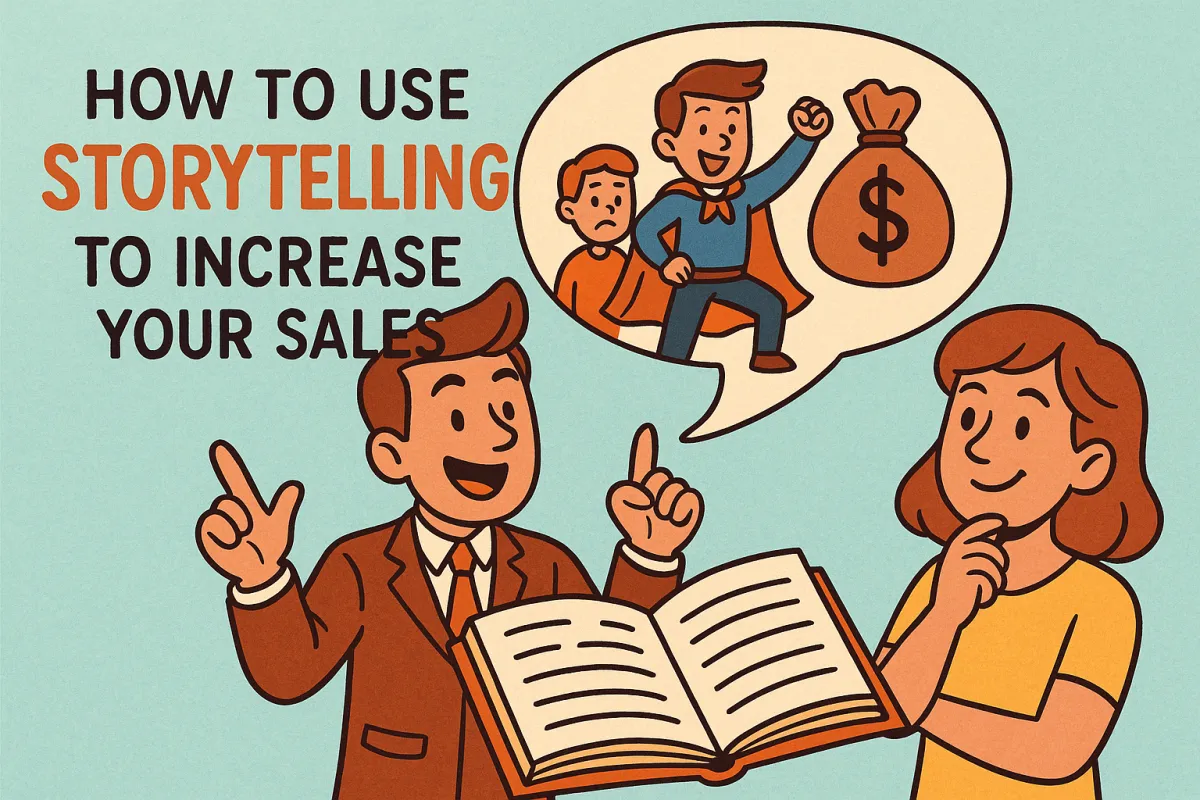
How to Use Storytelling to Increase Your Sales
How to Use Storytelling to Increase Your Sales
If you want people to remember your brand, trust you, and buy from you—don’t just pitch. Tell a story.
Storytelling isn’t just for novels or TED Talks. It’s one of the most powerful tools in marketing. Why? Because stories activate emotions—and emotion drives action.
In a world of constant noise, your story makes your business stand out.
Here’s how to use storytelling to boost your sales (without sounding cheesy).
🎯 Why Storytelling Works in Sales
It builds emotional connection
People don’t buy based on logic—they buy based on feeling.It helps people see themselves in your offer
A good story makes your audience think: “That’s me!”It makes your message memorable
Facts fade. Stories stick.
✍️ What Makes a Great Sales Story?
Every good story has 3 key parts:
The Struggle
Show what life was like before the solution.
👉 “I was overwhelmed, burnt out, and losing clients.”The Shift
Introduce the turning point—your product/service.
👉 “Then I discovered a smarter way to manage my time…”The Success
Paint the picture of life after.
👉 “Now, I serve more clients with less stress—and actually enjoy my weekends again.”
🔥 5 Ways to Use Storytelling in Sales
1. Share Your “Why”
Let people in on why you started your business. The more real, the better.
🧠 It builds trust.
2. Use Client Success Stories
Instead of just listing features, tell stories of real people who got results.
📸 Bonus: Include pictures or testimonials.
3. Weave Stories Into Your Content
Blog posts, reels, emails—all are great places to sneak in quick stories.
Even a “mini story” in a caption can spark interest.
4. Create a “Hero’s Journey”
Position your client as the hero—and you as the guide.
You’re not the star—they are. You just helped them shine.
5. Overcome Objections with Stories
Instead of saying, “Our service is fast,” tell a story of how you saved a client’s deadline last minute.
Stories prove the point without the hard sell.
👀 Real-Life Example
Let’s say you’re a fitness coach. Instead of saying:
“I help women lose weight and get fit.”
Tell this:
“Three months ago, Sarah came to me exhausted and frustrated after trying every diet. She had two kids, no time, and low confidence. We created a simple, sustainable plan that fit her life. Last week, she ran her first 5K. That’s the kind of transformation I help women create.”
Which one would YOU respond to?
💡 Final Tip: Keep It Real
Authenticity > perfection. You don’t need a dramatic sob story.
Just be real. Be human. Share your wins, struggles, and the stories of people you’ve helped.
When your audience sees what’s possible for them through someone else’s journey—they’ll want to start their own.
